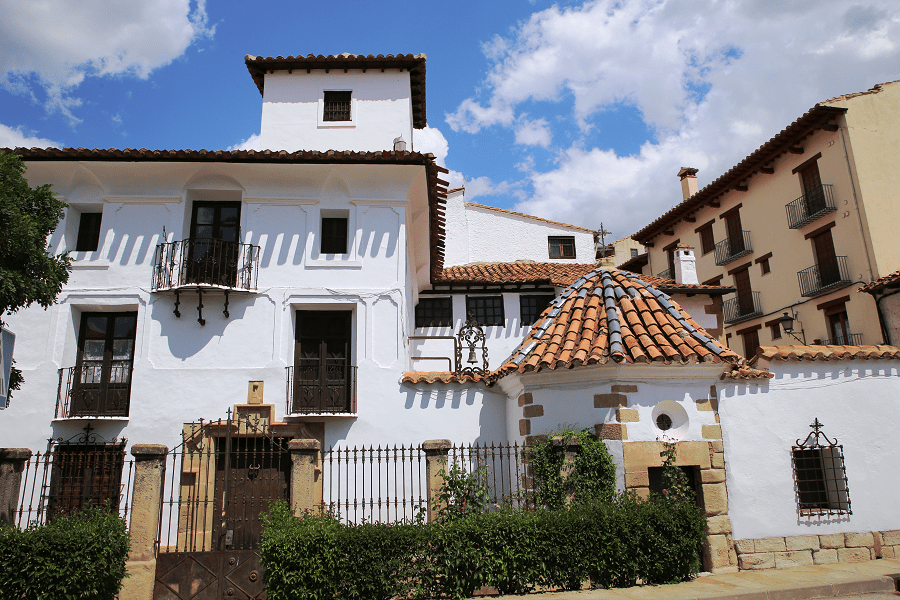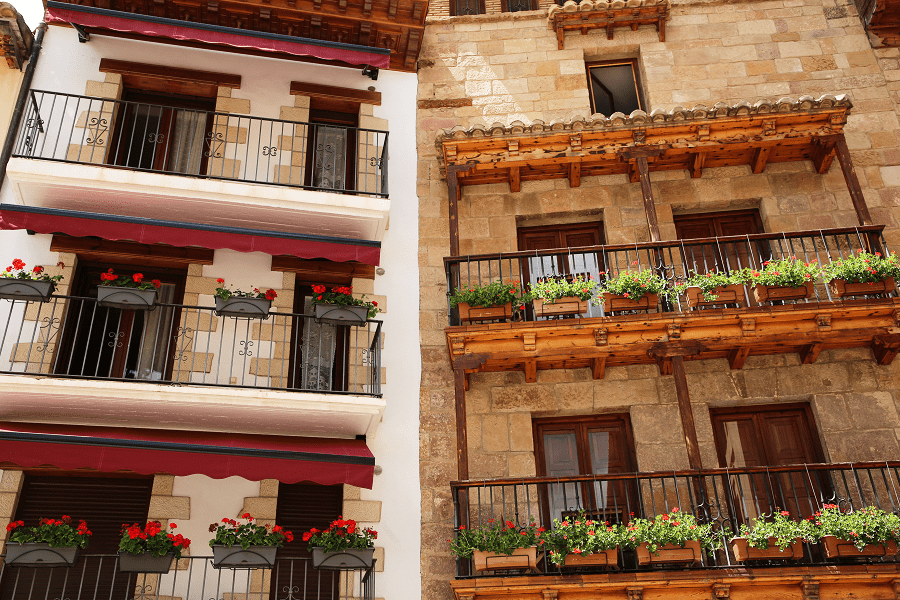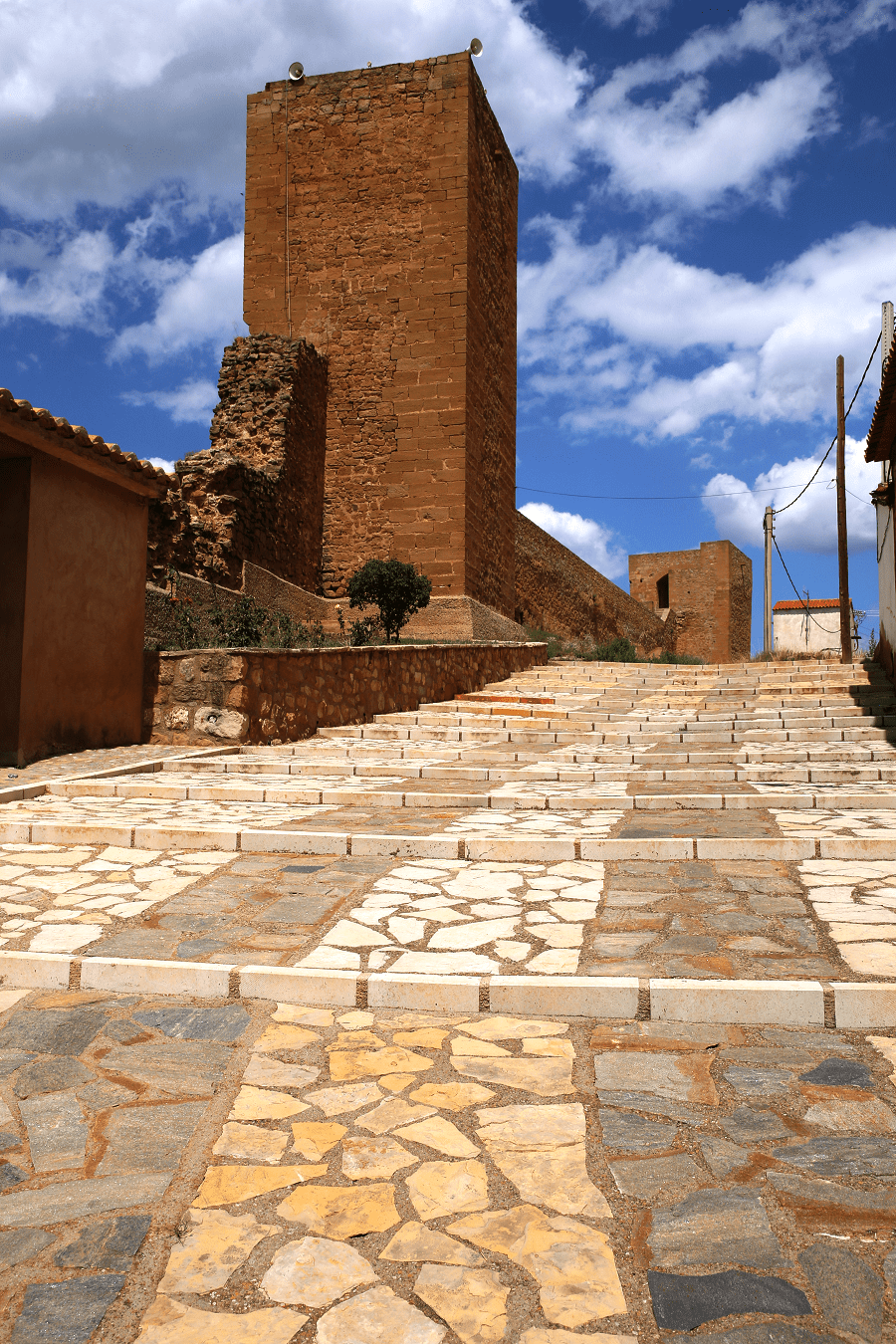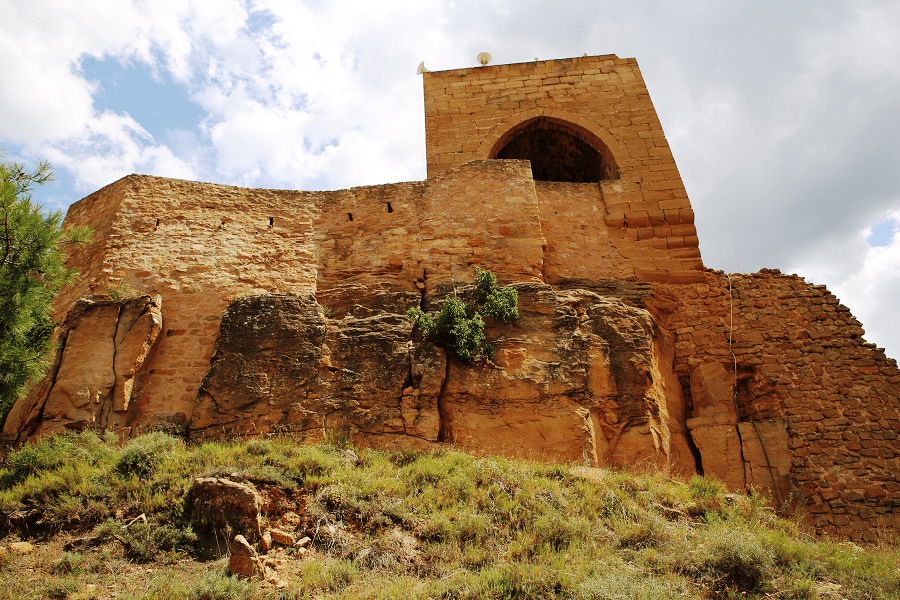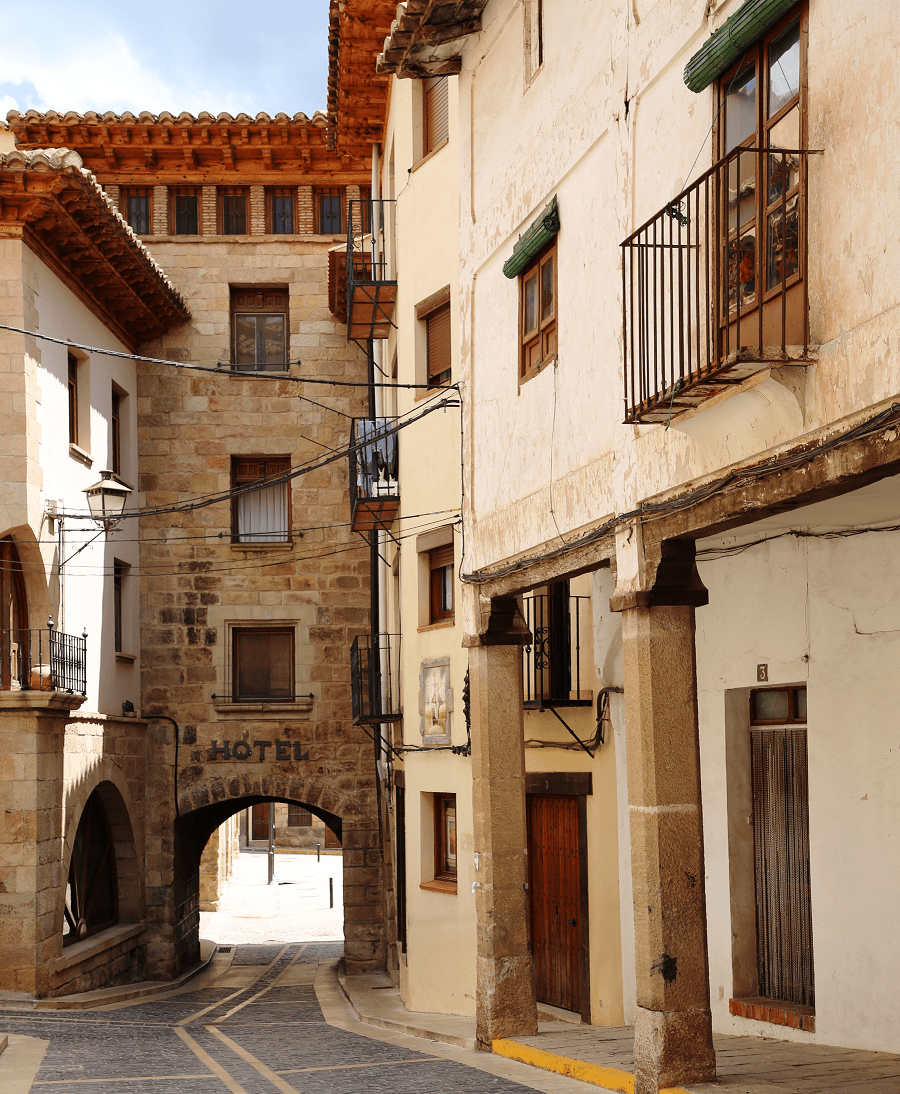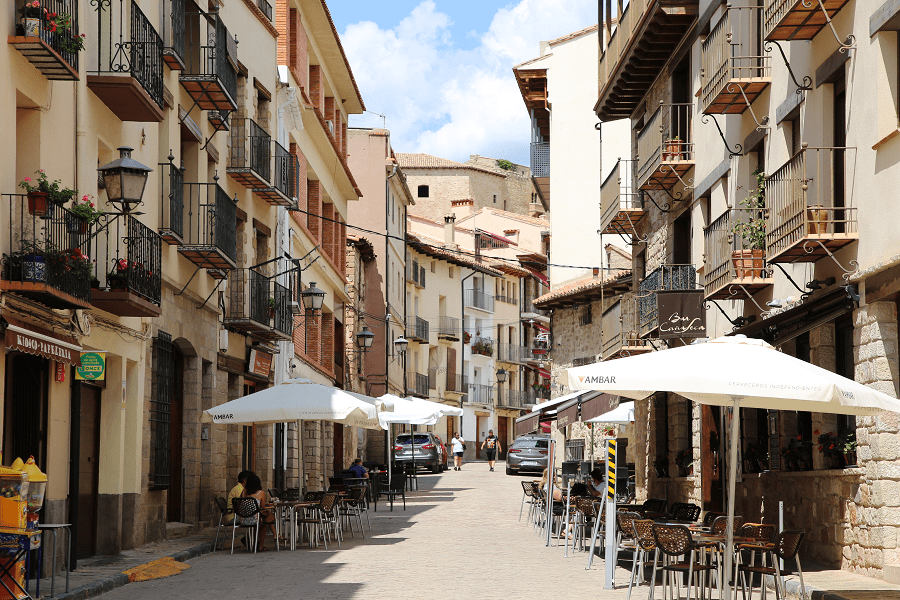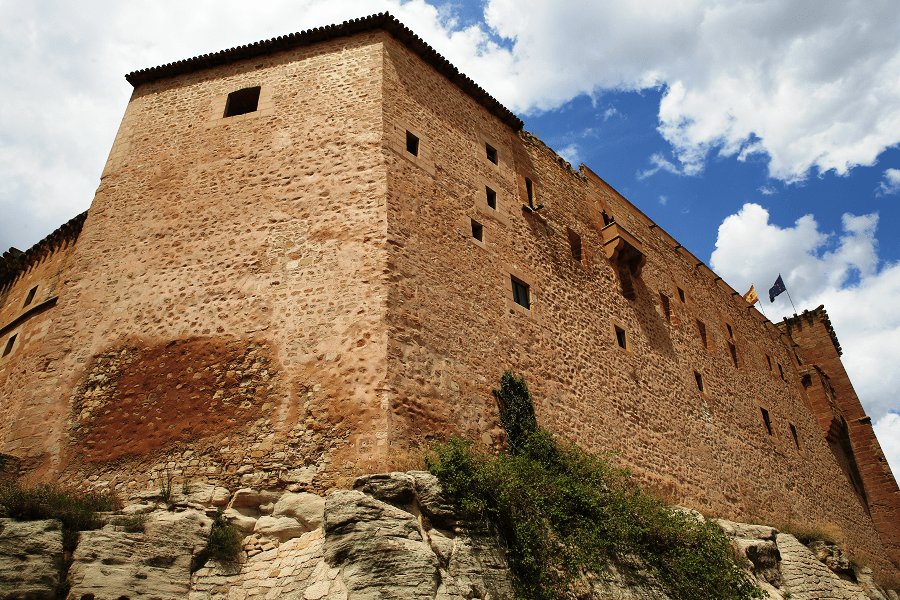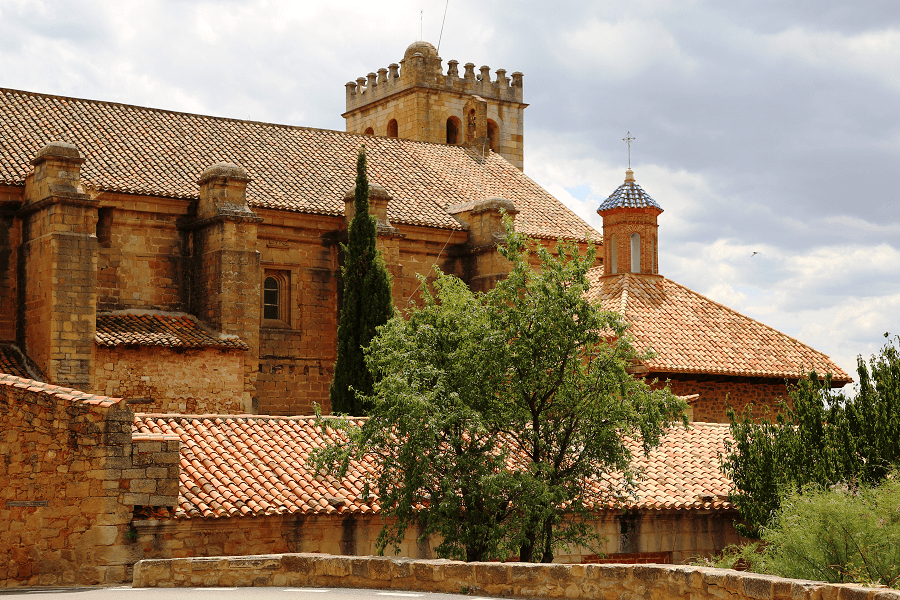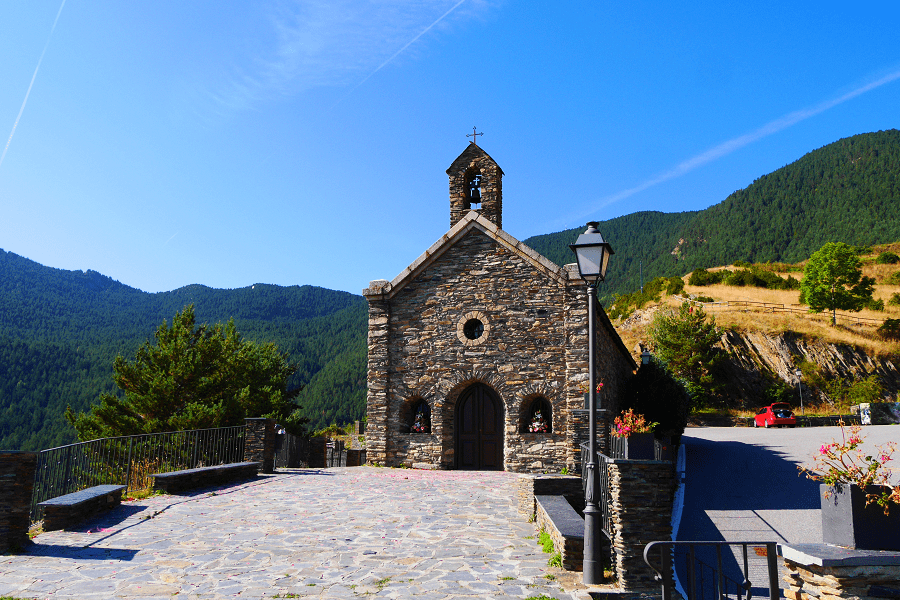Mora de Rubielos is a town and capital municipality of the Gúdar-Javalambre region in the province of Teruel, in the autonomous community of Aragon, Spain.
Tourism and main attractions
Old collegiate church of Santa María is a Gothic-style temple from the mid-14th century built with stones from the quarries in the area, thanks to the patronage of the Fernández de Heredia family. It consists of a single nave with chapels arranged between the buttresses, being its compact and simplicity of conception typical of the Levantine Gothic.
The width of its nave is 19 m, only surpassed —in the Spanish Gothic style— by that of the Girona Cathedral. The nave is divided into five sections covered with a ribbed vault, and is closed by means of three five-sided polygonal apses, reinforced on the outside by the buttresses.
At present five hermitages are conserved in Mora.
The Hermitage of Loreto, built in 1547 and renovated in 1798, has a single nave with two sections, a semicircular head and covered with a half-barrel vault with lunettes.
The Hermitage of San Roque dates from the 17th century and, like the previous one, has a single nave made of ashlar stone and masonry.
The Hermitage de la Soledad is also a single nave covered with a half-barrel vault with lunettes.
The Hermitage de la Dolorosa is of doubtful chronology, although the reform it underwent in 1969 caused it to lose its original structure. Unlike the previous ones, it has an oculus over the access door as well as a belfry.
The Hermitage de San Miguel is an 18th century building, made of masonry and ashlar stone to highlight the corners. On the outside, the blue ceramic tiles of the dome and the brick eaves decorated with saw teeth stand out. It was rebuilt in 1978.
The Castle Palace of the Fernández de Heredia stands on a rocky platform at the top of the town. Of great magnitude, the building stands out both in surface and in thickness of its walls, which would connect with the solid and sober character of the Mediterranean Gothic. It was not conceived exclusively with a military purpose, but also residential, so it combines elements of military architecture with others of palatial and stately roots.
Existing as early as 1198, the oldest part corresponds to the Romanesque style of the 12th century – the two rooms located below the level of the patio – while the defensive towers, the chapel and bays of the porticoed patio are from the 14th and 15th centuries. Today it houses the Ethnological Museum and a specialized library. In summer it hosts the “Puerta al Mediterráneo Festival”.
The City Hall, with a parallelepiped form, is a very massive building. Its ashlar façade corresponds to the Herrerian style of the first half of the 17th century, sober and with simple geometric moldings.
The town contains several notable arches and portals, such as the Arco del Calvario, made of ashlar masonry and built in 1801, the Portal de Alcalá, the Portal de Cabra or the Primer Portal de Rubielos, a curious tower-door dating from 1380.
Another portal, called Nuevo Portal de Rubielos, erected at the end of the 14th century and later dismantled for making it difficult for trucks and cars to pass, it was rebuilt in 1993.
It is also worth mentioning the Puente Viejo or Puente del Milagro, a masonry and tasting work consisting of two arches.
How to get to?
From Zaragoza 2 hr 11 min (210 km) via A-23
From Teruel 36 min (45.4 km) via A-23 and A-232
From Madrid 3 hr 49 min (348 km) via N-211 and A-2
Main information
Area: 166 sq. km
Coordinates: 40°15′11″N 0°45′09″W
Population: 1512
Languages: Spanish
Currency: euro
Visa: Schengen
Time: Central European UTC +1




